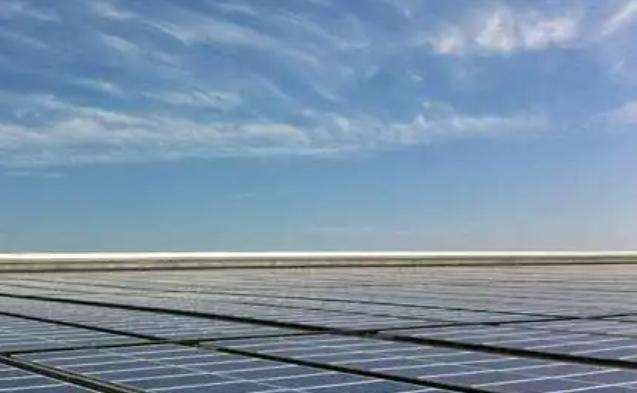This material will collapse when it ages, changes external pressure, or is poorly constructed.
1. Material Aging: Over time, underfloor heating foam panels can lose their original strength and stability due to material aging, leading to collapse.
2. External pressure changes: Unstable water pressure in the floor heating system or pressure changes in the external environment can affect the foam board, causing its structure to be damaged and collapse.
3. Improper Construction: If the underfloor heating foam board is installed incorrectly, such as by setting the nails too tightly or using improper force, it can damage and collapse the foam board.
Which type of underfloor heating insulation board is best
The thickness of the underfloor heating insulation boardthe ground is generally 20mm to 50mm. The specific thickness should be determined according to the actual situation. the thickness of the underfloor heating insulation board is thicker. The thicker the thermal insulation performance, the better, but the thicker the thickness, the higher the cost. Therefore, when choosing an insulation board for underfloor heating, the thickness should be determined according to the actual thickness. Location to achieve the best thermal insulation effect.
Which extruded boards or foam boards should be used for underfloor heating?
Insulated boards for underfloor heating are made from a variety of materials. The most common panels include polystyrene foam panels, extruded polystyrene panels, polyurethane foam panels, etc. Insulation panels made from different materials have different characteristicsand different applicable scenarios, and the selection should be considered according to the specific situation. Polystyrene foam board is a common underfloor heating insulation material. It has the advantages of light weight, good insulation performance and practical construction. It is suitable for floor heating insulation, wall insulation and other scenarios. Extruded polystyrene board has the characteristics of high density, high strength and good thermal insulation performance, and is suitable for floor heating insulation, roof insulation and other scenarios. Polyurethane foam board has the characteristics of good heat insulation performance, good sound insulation effect and practical construction. It is suitable for floor heating insulation, wall insulation and other scenarios. Overall consideration when choosing pansinsulation boards for floor heating, you should choose according to the specific situation and choose the appropriate materials and specifications to achieve the best insulation effect.
Is it better to use foam or flat underfloor heating
Extruded panels.
Extruded boards and foam boards can be used as insulation materials for underfloor heating, but extruded boards perform better in this regard. The higher density and strength of extruded panels provide better insulation and load-bearing capacity, helping to reduce heat loss and increase the efficiency of underfloor heating systems. Extruded panels also have better compressive strength and durability, which can maintain long-term stable performance and reduce the frequency of maintenance and replacement. From the point of view ofWith overall performance and long-term benefits, extruded polystyrene panels are the most preferred insulation material in underfloor heating systems. Of course, this is just a personal opinion and different people may have different opinions and preferences.
How thick is the foam board needed to install underfloor heating?
Foam board is preferred.
Floor heating foam panels have good impact resistance. The foam board is 98% air filled, has sufficient capacity to withstand external impacts by changing and recovering its shape, and has low water absorption. Humidity affects the thermal and mechanical properties of the material, and the low water absorption of foam board helps maintain these properties.
The floor heating foam panel is a white object made of polyst beadsexpandable yrene containing a volatile liquid foaming agent, pre-expanded by heating then heated and formed in a mold. It has the structural characteristics of fine closed cells. .
Normal 20 mm foam is sufficient. To be used as an insulation material, thermal conductivity is a very important standard. Foam boards have independent bubble structures and low thermal conductivity, typically 0.039 W/(. m·k) or less, with low density and light weight.
In addition, the surface water absorption rate of the foam board is low, its anti-penetration ability is good, and it can also be recycled. Its degree of recycling is the highest among plastics. However, foam boards have poor strength and bearing capacity and are prone to cracking. If used as insulation for underfloor heating, they need to be reinforced, which is more troublesome.
Chinese floor tiles generally use prefabricated or cast-in-place tiles. The sound insulation effect is extremely poor. People climbing stairs will affect the underfloor heating which is used to increase the insulation layer. a very good sound insulation effect and can reduce noise pollution.
Detailed information:
Construction precautions of concrete filling layer:
1. The underfloor heating pipe has been installed and the hydraulic system. the pressure test was successful. The construction of the concrete infill layer must be completed within 48 hours;
2. The construction of the concrete infill layer shall be undertaken by qualified construction civil parties, and our unit will cooperate closely;
3. The construction of the concrete filling layer During construction, the water pressure in the pipeheating must not be less than 0.6 MPa. During the maintenance of the filling layer, the system water pressure should not be lower. greater than 0.4 MPa;
4. The filler layer is used to protect plastic pipes and make the floor a uniform temperature structural layer. Usually it is pisolite concrete, the grain size of the stones should not be more than 10 mm, the volume ratio of cement mortar should not be less than 1:3, and the strength degree of the concrete should not be less than C15. The thickness of the filling layer should meet the design requirements, and the flatness should not exceed 3mm;
5. The underfloor heating system must install expansion joints at the vertical intersections of walls, columns and doors; , etc. with the ground, and the width of the expansion joints must not be less than 10 mm. The width of the expansion joint should nott not be less than 8 mm.














